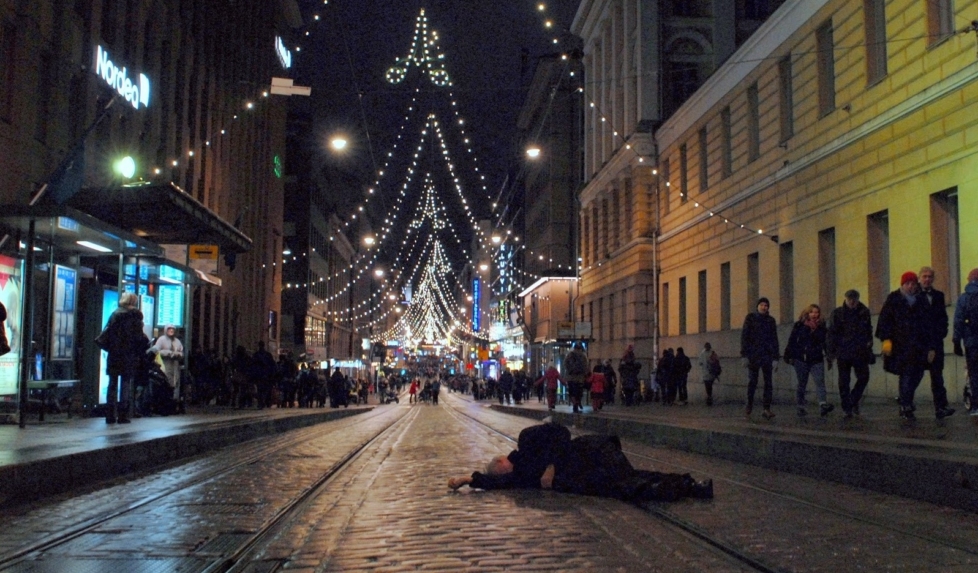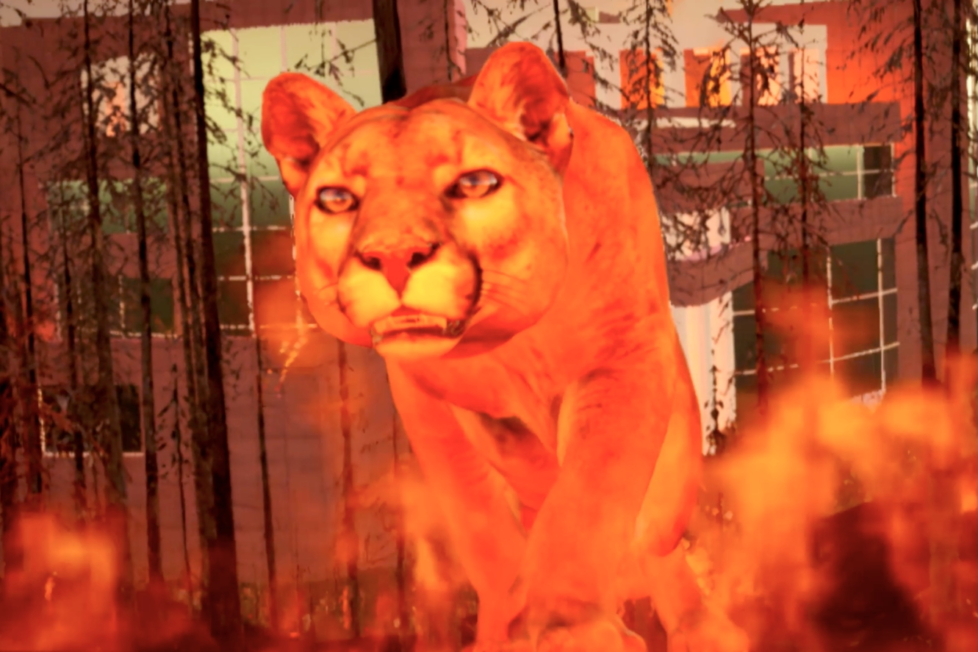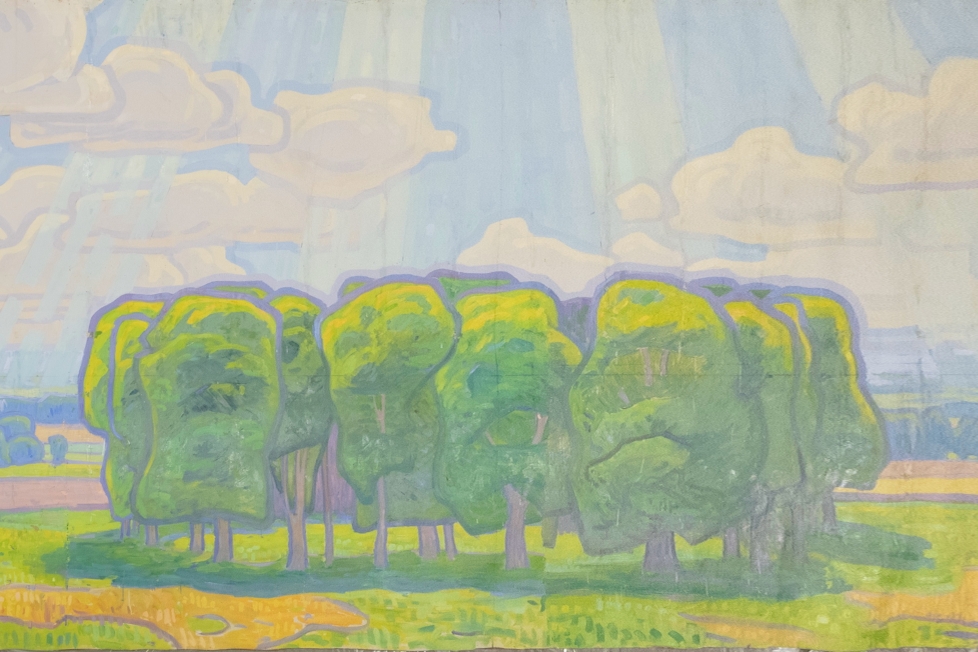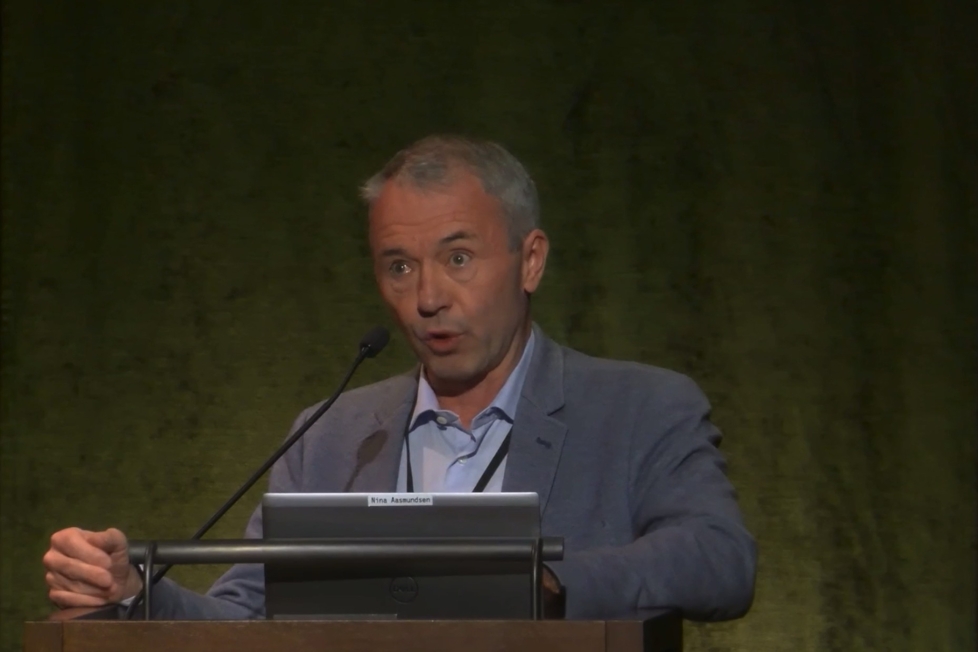
The various manifestations of civil unrest that have taken place during the last year are perhaps not rightly served by the spread of images alone. That is to say that having one’s image circulated is not really the same thing as being heard when an urgent need is expressed. The human voice plays an important part in such displays of values and conviction. Even when individual demands can’t be distinguished from a collective murmur or roar, this ambience itself can carry a message. Moving from the specificity of civic action to a broader perspective on sonic environments, it is apparent that sound is fundamental to the assertion of cultural identity through the making, performing, and dissemination of music and language.
In a roundabout way, these observations bring me to the social role that sound plays in the work of artist and musician Simona Barbera. Her hypnotising soundscapes are constructed from fragments found in the folds of the internet, on the streets of a city, and in the depths of historical archives. She amalgamates these findings into new sonic worlds that bespeak the critical attitude with which she approaches space, both urban and virtual.
Barbera is based between Italy and Norway, and has exhibited frequently in both contexts. In Norway, her presence on Oslo’s artist-run circuit is especially of note. In the past five years alone, she has had exhibitions at Lynx Pavilion, Podium, and Noplace, and participated in a project organised by Vandaler Forening and Kunst Vardo. Barbera’s commitment to the self-organised also prompted her to open a space together with artist Ronny Faber Dahl, space 4235, which has been operating out of Genoa since 2010.
This conversation took place in January, a few weeks before Barbera opened her current exhibition Between the Translucent and the Blue at Lydgalleriet in Bergen. I checked in with her online from Lisbon, where yet another ambulance siren cut through the particular silence of lockdown – deeper and with more sharpness than I thought possible. When we last spoke, in early summer 2020, the prospect of being allowed to travel to Norway from her native Italy seemed impossibly distant. Now, she answered my call from the serene city of Moss just south of Oslo, seemingly content with the calm. The usual connection issues and repeated queries “can you hear me?” and “sorry, I lost you for a minute,” have now become par for the course. Still, they serve as reminders that our exchange is enabled by an industry with vested interests my interlocutor and I do not share.

Let’s start with something fundamental: What is it about sound that appeals to you?
I began playing music when I was six and that was the start of everything, in a sense. As I come from a musical family, I have carried a close relationship to music with me throughout my life. Sometimes, it’s been a heavy baggage because music engages with the performative, with presence, in a way I’ve always found to be complicated.
As I developed a more precise and focused relationship with sound and art, and studied with people who were engaged in the social and political as well, my experience of sound changed completely. Music as such disappeared, or the concept of sound composition, performative acts, scores, and so on did. I became more rooted in the materiality of sound – which can be understood as acoustics, or psycho-acoustics – as well as its technical aspects. But sound has also come to be more about its consequences.
I relate this to archives, which is something I’ve worked with often, and the possibility of reconstructing lost histories from sound recordings. Sound can capture and manifest very fragile moments that otherwise would easily disappear from memory. It connects and combines individual and collective memory, and can allow hidden forms of activism and resistance to be disclosed. I’m drawn to the possibility of playing with sounds that are simultaneously material and political experiences.
How do you think about sound as a product of the human body, as it manifests through voice and performance, versus the materiality of sound itself?
The voice has such potential. Not only because of its relation to language, but also in the way we distort and spread it. When the voice gets recorded and disseminated, it is a powerful tool, I believe, for directing a message. On the other hand, it can also be very intimidating when voice encounters space. Sonics has always been the most fascinating field of study to me because of its conceptual complexity and invisible nature. You can bypass ocular perception and instead be left with something that resonates through the whole body. In several of my works I use infrasonics, which are frequencies below those that the human ear can detect. The body feels them regardless. And these frequencies carry information and have consequences for the body, even if outside of conscious perception.

I’m curious about the role of memory and archives in your work …
In 2015, I began working with archival live recordings of demonstrations against police brutality in Italy in the late 60s. I was working from the hypothesis that archived fragments of recorded material could reconstruct invisible patterns present in historic events. This became the works If I just laid down, exhibited at Lynx Pavilion in 2015, and Ippocampo, exhibited at Noplace in 2016. These works blend a sound file from the Italian magazine Le Vie Nuove that was released in 1960, with samples from aspiring teen musicians that have been victims of deadly police brutality, and recordings from rallies taking place in Italy in 2015 protesting the killings of adolescent youth in southern Italy and Michael Brown in the US. I thought of those fragile archival recordings as a political tool pitted against police brutality, some kind of defence.
Could you expand on this idea of sound as a political tool?
For a long time I’ve been questioning how I can use frequencies or sonic landscapes as materials, and still be connected to the social and political fabric of the world. In the case of Ippocampo, for example, sound became political, in a way, the moment I thought of using fragments of sonic findings from the internet and streaming platforms that were talking about the issue of racial injustice and police brutality through music. People were composing or rapping, both in Italy and especially in America, in response to this. And though those lines are hidden on the internet, not included in an official archive, they are still incredibly relevant. The recorded voice is an address with agency in every word. Music is fundamental to certain communities, and if you look past the musicality and analyse what is being said, I believe it can show a “way out” of certain conditions.
Would you describe it as a practice of resistance?
Absolutely. And I noticed that it is often used this way among adolescent youth. Sometimes it takes the form of fragile, distorted, extremely low-fi files that circulate online. In internet culture, conversation and production are very fragmented. And, in my work, I incorporate fragments from this that I alter and abstract even more. When I reach out, I find that young people are often very happy to share their work with me. Sometimes, I enter into dialogue with it, other times I retreat from it, using the sound both as abstraction and political self-representation at the same time.

In the past, your work has included audience participation. In Looming Over the Darkest Black, which was a sound installation and a live performance at Henie Onstad Art Centre in 2009, visitors could control the sound by choosing and mixing tracks. In other words, you distributed control over an essential part of the work. In Apnea, a sound piece installed in public space for the 2019 Monza Biennale in Italy, you took audience participation one step further by giving them a choice of whether the work would even be on. Do you see this activation of audiences in relation to issues of agency and self-representation?
The question of agency over how information is received really interests me. With the work in Monza, which was a commissioned work for a place of my choosing, I felt that forcing my intervention onto the public would have been violent and inappropriate. Apnea was madefor a place of leisure activities for youth in a suburban part of the city, in a school gym, where the public had access to a swimming pool. It takes the form of a score that I produced together with two students. We recorded the movements of people engaging with the space and other open areas in the city and created a sort of dialogue. It was sensual in some ways, and carried the fragility of the body into a very harsh environment. In places like the gym, the body is being exposed to structured training and to judgements. Apnea means suspension of breath or breathing, which, before the pandemic, had a relationship to the feeling that something is bigger than you as an individual. Especially when you feel unable to act, which is something that one feels often at a young age. I’m thinking about this in relation to competition in sports or careers, but also in relation to economic stress, like debt and the experience of existing on the economic margins.
You know that something is there, a recorded pattern or a score, but have the choice to refuse to accept it and pull the plug – to touch or not to touch. I left a potential for something to happen. If there was never any sound at all, only the infrastructure and its potential, I would still be pleased. These physical conditions interested me more than the sound composition itself.
What have you been working on for the exhibition at Lydgalleriet in Bergen?
I began developing the work for the exhibition when the initial lockdown started in Italy last spring. The lockdown there was extremely strict: you had to have specific documents to go outside and so on. I thought, “OK, if I’m going to be in lockdown for several months, at least I have to come up with a work.” So I started to work with my immediate neighbourhood in Genoa. I recorded the sound of the lockdown from the moment it was named a curfew, and I made a track titled noi fuori nella notte (us, out in the night) which was published on the online platform that I am running in collaboration with the artist Ronny Faber Dahl.
I took notice of how completely the sound field had changed. It was an immediate acoustic shock. And I don’t mean only silence. Rather, there were sounds of surveillance, noises coming from the infrastructure of the city, which are much louder when human activity stops than one would expect. These flickering sounds became a sort of resonance that overtook everything. I’ve also never seen so much police present in public space, needlessly controlling areas and enforcing these regulations on people that found themselves locked inside their homes. When I was finally allowed to move more freely again, another sound came through, which was from humans, especially young people. They were restless, not only angry, with a situation where they perhaps got deprived of too much too suddenly and with rules too strict for anybody. Sounds of movements and actions were jumping into those corner spaces of the urban environment, almost like skaters do, activities that are both liberating and a little bit subversive. This, together with a newfound interest in 3D soundscapes and the techniques of ambisonics, gave shape to this work, which I have titled Between the Translucent and the Blue.

Forgive me, but I think I need an explanation of ambisonics.
Ambisonics is a multichannel recording technique that allows you to reconstruct a three-dimensional sound field. When recording, four microphones are used to capture a 360-degree scenario. It is also a mixing technique with specialised software and plug-ins that allow you to focus on specific spatial qualities of the recorded sound. The technique, which was developed in the 70s, was forgotten for a while until it was repurposed for VR development in more recent years. I will be using eight channels in Lydgalleriet, but hypothetically there is almost no limit to the number of channels one could use. Then sound becomes architectural. But I love the humble act of simply dismantling a cheap speaker and creating a sculpture from it. In the past, I’ve been using a lot of extremely lo-fi materials, since what interests me are the uses of a technology in a critical sense, not necessarily its mechanical capabilities.
Technology can be a destructive tool and something I easily relate to control and systems of control, like algorithmic governance. Recently, Mackenzie Wark addressed the negative consequences of technology in her book Sensoria: Thinkers for the Twenty-First Century (Verso, 2020). While identifying it as an interesting tool in art, Wark also discusses what it means to be surveilled, and what that means if you are caught in a situation where your defences are weak, or you are too young, or your strength is too low. When I use technology, I need to disclose this weakness. In my work, I always try to let some small mistakes or errors come through because I think those are elements that speak a lot of our vulnerability.
You have been involved with Art Workers Italia (AWI), an advocacy group for artists and cultural workers who identify as Italian, whether living in Italy or abroad. What motivated you to get into that work and what has it been like?
The summer was a period that was very difficult for me in many ways, not only because of the lockdown, but also the impossibility of traveling to Norway, which is my second home. In Italy, no infrastructure and no public conversation has acknowledged the precarious situation of artists and cultural workers during the pandemic. Abandoned again and again over the years, discussions about our working conditions never resulted in any manifest outcome. With the knowledge that making it as an artist in Italy is hard, a new generation connected online, and AWI came out of this dialogue. I dove into this work that I believe has the opportunity to finally produce change.
During the pandemic, a sort of theoretical humiliation was added to the pressure we experienced as a professional group, when the prime minister described artists as “people who make the audience laugh.” With all due respect to comedians, to us this comment entailed an erasure of our history. Not only did we experience a complete lack of structural security and support, but we were also being reduced to entertainers. This motivated art workers and artists to come together in one union, as many of us lost not only work, but also our dignity at the same time.
Has getting involved in strategic action towards systemic change as a group influenced the way that you think about your practice?
I think the most important thing for me was this image that not only the government, but perhaps even society in Italy needs to be renewed – to give space and voice to the consequences of restricting language. What I’m discovering, not only in the work with AWI, but also in my artistic work, is that acknowledgement of the importance of complexity in life sometimes needs a renovation in language as well. There are other complexities than living between countries that human beings go through, in terms of gender, economy, and every other complicated decision a human being makes. What I have acknowledged is the need for structural complexities, and the need to be recognised and respected, even in terminology, perhaps. AWI is also trying to erase a Romantic notion of the Artist – as someone living by themselves, alone with their creativity – and the idea that this alone can be enough. A homogenising and splintering of the artist community erases complexity because it deprives us of many voices.

















Leserinnlegg